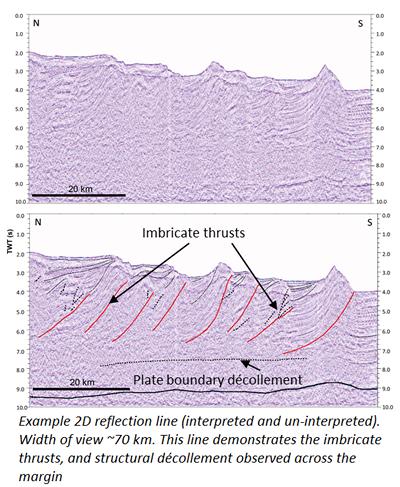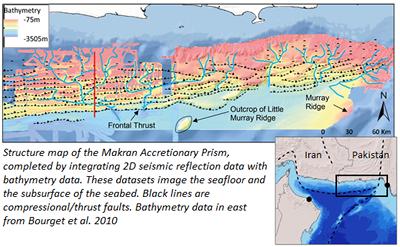Research project: Structure, fluid flow and earthquake potential of the Makran Subduction Zone, Pakistan
This project is focused on investigating the structure and earthquake potential of the Makran Subduction Zone. This margin has been previously understudied by seismic reflection data and currently experiences low earthquake activity. Its high sediment input (up to 7.5 km) and shallow geometry had lead to previous studies classifying it as a primarily aseismic margin. However, the occurrence of a Mw8.1 earthquake in 1945 raises questions about its true earthquake potential, and the Makran may pose a significant earthquake and tsunami hazard.

